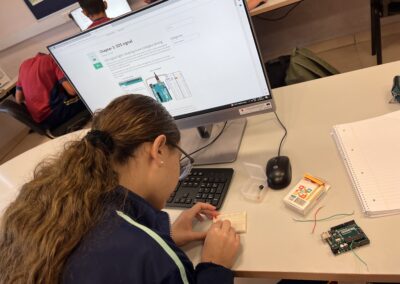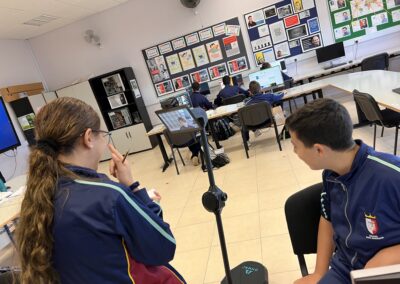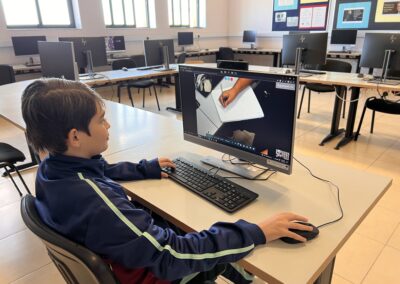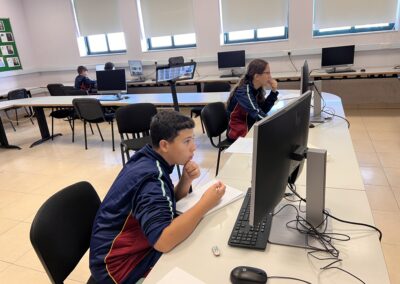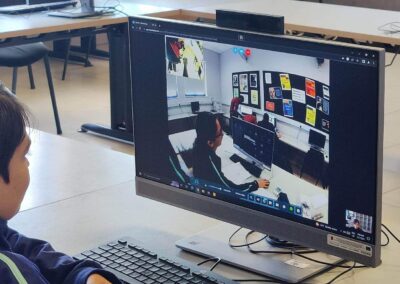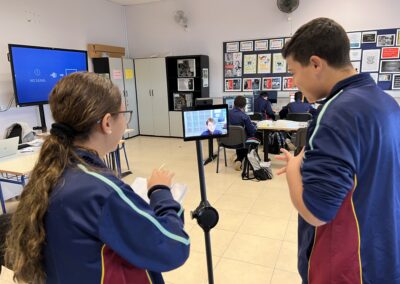TRinE Story: TR Experience with Secondary Level Computing Class
Lesson Details
In this lesson, the group was given a problem-solving task and asked to build a simple Arduino-based SOS system. Students worked in groups of two or three to discuss their implementation, build the required circuit, code, and test their system.
One of the students was not present in class and joined the group via a Telepresence Robot. This student had received a ten-minute introduction to the use of the TR device prior to this lesson. During this lesson it was clear that this brief introduction had been sufficient to make this student feel confident maneuvering and communicating via the TR device.
The lesson was quite technical and centred around the use of the Arduino which is a relatively small piece of hardware that the remote student did not have physically at his disposal. Despite this, this student’s experience and that of the rest of his group was very positive and the quality of the group work was conducive to the production of work of a very good level.
This experience indicates the applicability of TR in the secondary school environment in including remote learners in class-based learning activities.
Student Experiences
“I felt good using the telepresence robot because it was easy to use. Even someone that doesn’t have a lot of technological skills can learn how to use it in under 10 minutes because the controls of it from the website were intuitive and easy to understand. For example, there was a camera icon to turn on and off your camera just like on social media.
If someone wasn’t at school for a long time I think it would be a good idea to use this robot to attend lesson it has good sound, mic and camera quality and it’s pretty easy to use. Maneuvering it is easier than it may sound, because it has a camera facing down to see what is on the ground in front of you.
Attending class via TR feels like a normal lesson you still can understand what the teacher is saying from the robot, and you still can see and interact with her and the rest of the group.
My only suggestion for an improved experience on the robot is it’s the speed: I would suggest lowering it a little because it moves a little too fast for classrooms which often have tables and chairs fairly close to each other.”
“It felt good using the robot, the remote student could follow the lesson perfectly and we could work in a group with him. For communication it was good, except that my team-mate Brianna and I needed to speak a little more loudly for Jayden who was attending via TR to understand us more clearly.
Attending via TR can really help the student who cannot be in class keep track of what’s happening in the lessons, so when he/she comes back to class they wouldn’t have missed a lot of work.
I’m not sure it’s a great idea for a teacher to give a lesson via TR though, because as a teacher especially in a big class you need to project your voice as well as manage the class projector and other class resources. That might be difficult on TR.
Perhaps in future TR devices may be equipped with slightly better sensors, for example a more sensitive microphone and that may even further improve communication, and we could talk to our remote classmates without needing to raise our voice.”
Share your story!
Do you also have experience with telepresence robots in education? Contact us and share your story! We are happy to publish it as a guest article on our website.

